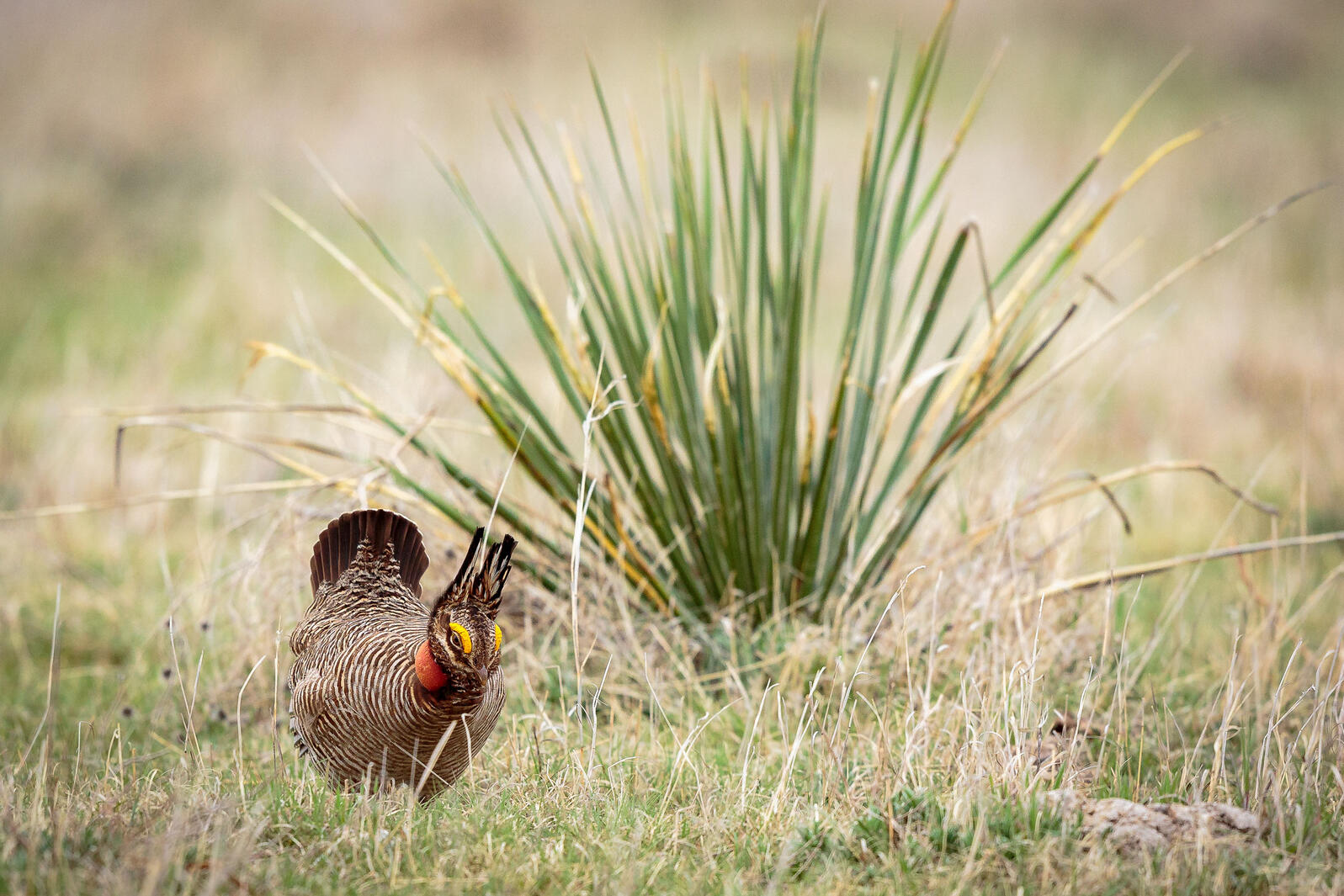By: Andy McGlashen Associate Editor, Audubon Magazine May 5th, 2021
A little more than a decade ago, wildlife biologist Blake Grisham and colleagues detected a striking pattern among Lesser Prairie-Chickens nesting on the high plains of New Mexico and Texas: Their chance of successfully hatching chicks falls by 10 percent every half-hour the nest is exposed to temperatures above 93 degrees Fahrenheit. During one brutally hot spring, when the mercury reached triple digits several days in a row, Grisham watched some prairie-chicken hens stubbornly sit on their eggs, while others gave up and left. “The ones that abandoned their nests were the winners,” says Grisham, now an associate professor at Texas Tech University. “The eggs were basically cooked.”
Lesser Prairie-Chickens are tough birds that evolved to handle harsh weather. They’ve always endured heat waves and droughts, their numbers sometimes tumbling as a result. But the birds, a type of ground-dwelling grouse, were numerous—perhaps 2 million strong before European settlement—and they occupied a vast area of the southern Great Plains. Given a few years of decent rainfall and milder temperatures, they’d bounce back.
Today, however, only around 34,000 Lesser Prairie-Chickens remain, spread across parts of Colorado, Kansas, New Mexico, Oklahoma, and Texas. They’ve lost 84 percent of their original habitat, much of it converted to croplands, oil and gas fields, wind farms, and other types of development. What remains is largely unprotected—95 percent of it is private land—and is expected to become intolerably hot and dry due to climate change, increasing the likelihood of nest failures like what Grisham witnessed. “My fear,” he says, “is that we’re getting to the breaking point of where the species can’t keep up with our actions.”
To continue reading: https://www.audubon.org/news/endangered-species-deadline-looms-lesser-prairie-chicken
